#red knot
Explore tagged Tumblr posts
Text

The @shikashikacollective project A Guide to the Birdsong of Migration has been funded on @Kickstarter but you can still contribute (https://www.kickstarter.com/projects/shikashika/a-guide-to-the-birdsong-of-migration) This project is part of an series of music albums inspired by rare and vulnerable bird species like the Red Knot
95 notes
·
View notes
Text

Calidris canutus [コオバシギ,Red Knot]
シギチの群に混じっていました。 幼鳥のようです。 久々に出会えました。
94 notes
·
View notes
Text
The State Birds Initiative: Delaware (#1)

Welcome to the first official poll of the State Birds Initiative! Now, before the poll, one thing real quick. My suggestion is that you read the post below before voting in the poll below. That's especially important if you're lacking any context about the birds being presented as the new (or old) State Bird of the First State, Delaware. This is to be fully informed as to why these are being presented, and to make your choices appropriately. Lastly, some of these birds, you will notice, go against some of the rules listed in the introduction post. All is explained after the jump where the explanations are, I promise you that. But with that...OK! Here's the poll!
More details after the jump!
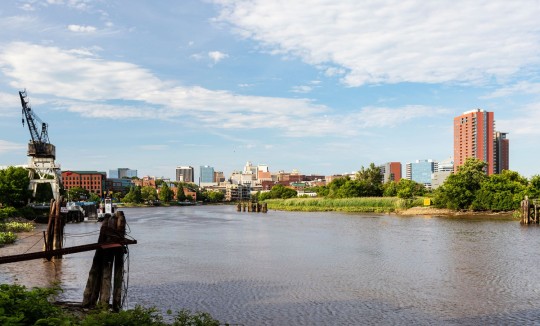
Welcome to Delaware, the First State!
Admitted into the Union in 1787 as the first state of this country, Delaware is the nation's second smallest, giving it the additional nickname "the Small Wonder"! Its capital is Dover, its most populous city if Wilmington (pictured above), and it's best known for its proximity to the Delaware River and the Delaware Bay, which it's actually named after. This does mean that Delaware Bay, for various reasons, will be one of the most important features of this post, since the wildlife that gathers around it is pretty ubiquitous in the state.
But OK, enough grade-school reporting of basic state statistics. What's Joe Biden's home state actually like, from the view of the citizens? On reddit, a user named hajisaurus said that Delaware is like a small town, but as an entire state. Compact, but eventful and familiar. Another user, raycooke, referred to it as the US condensed into miniature, with business in the north, beaches in the south and east, and farms in the middle. But the general vibe, it seems, is "familiar". Not overly friendly, but definitely close enough to be familiar. Also...the Bobbie.

God, that's a good looking sandwich. Invented in Delaware? Hell yeah. Anyway, off of turkey and onto birds. Personally, what all this says to me is that the chosen State Bird should be an easy-to-find sight, found throughout most of the state, and familiar to Delawareans in general. Something common but uniquely Delawarean would be great. In terms of habitat, water-bound seems appropriate, especially looking at beaches and estuaries. Again, the entire eastern border of the state touches the Delaware River or Bay, meaning water is somewhat important to the state (as is seafood).
Now, those Delawareans amongst us may have different opinions of what makes Delaware Delaware, and what represents its people most accurately. Which...yeah, I'm not from there, and I've only been there twice, and that's because I drove through it. Maybe went to one rest stop near Dover. And for the record, SOLID-ass rest stops in Delaware along the highway, just saying. Great job there, Delaware. But, yeah, PLEASE tell me if there's something else to take into account. And that goes for ALL of the states in this series, by the way. I can't claim to be an expert in any way here, so please call me on my bullshit if you feel that you have to. But, with that said, let's talk about what I do know: birds.
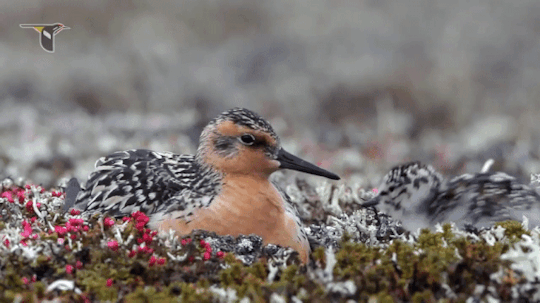
Red Knot (Calidris canutus)
For many of you, especially the bird-inclined amongst us, this was always going to be the obvious answer to this question. The Red Knot is an iconic Delaware bird for birdwatchers, as they're attracted to the state in MASSIVE numbers during migratory seasons. It's one of the most important and famous migrations in the country, and the flocks of Red Knots and other shorebirds are the main attraction. Why? Easy answer: the Atlantic Horseshoe Crab (Limulus polyphemus).
Delaware Bay is the site of the horseshoe crab's largest migration in the USA. This isn't the only place in the country they're found, but it's DEFINITELY the largest population of the species by a SIGHT. And speaking of iconic species, the horseshoe crab certainly fits the bill as a charismatic species of conservation concern. Which is why it may be curious that I'm highlighting the Red Knot, since they, y'know...EAT horseshoe crab eggs, alongside other birds in the great Atlantic seaboard migration. But that's actually why horseshoe crabs are so important.

Red Knots, amongst other shorebirds, depend on the horsehoe crabs for food, as these stopovers in Delaware Bay allow them to continue with their journey. Without the horseshoe crabs of Delaware, their life wouldn't be possible, and certainly not in the massive numbers found during migration. Understand, this is a threatened species, especially in the United States, that gathers in Delaware Bay in the thousands, with 2022 numbers being about 39,800 in a population. That's HUGE. The Red Knot is a symbol of this ecological boom, and both species should be celebrated. That's the reason the Red Knot is often given as the answer to this question of State Bird of Delaware, including by the Lab of Ornithology's article posted last year. Plus, it's got an iconic appearance, it's easy to find, and it tells a great story (which also includes a migratory distance of ~9,000 miles, which is crazy). Perfect, right?
...It doesn't breed in Delaware. It actually doesn't even breed in the United States. No, the Red Knot breeds in Nunavut and Greenland, above the limits of the Arctic Circle. I meant it when I said the Red Knot used Delaware as a stopover site. As such, it's an event when they arrive in Delaware twice a year...but they do leave. Pretty quickly, even. So, sure, the Red Knot is a great candidate for a number of reasons, but...is it OK if it doesn't actually breed in the state? I'd argue for it, since Delaware is is highest abundance of the species during migration in the country, and it's iconic in that way in particular. But I'll leave that as a question for you all to decide.
Let's go on to the next one, shall we?
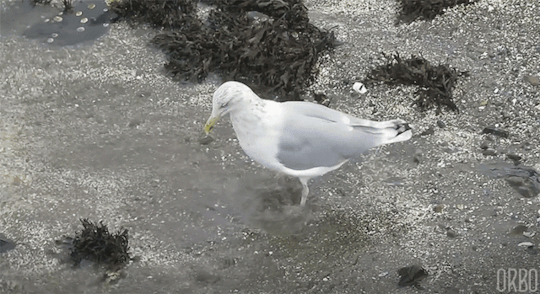
Ring-billed Gull (Larus delawarensis)
OK, this one might be cheating a bit, since the bird in question is found basically...well, everywhere. It's definitely not native to Delaware alone, and doesn't even breed there. So why even include this bird in the running? Easy answer: it's in the name. It's the only bird species in the world with the state of Delaware in its scientific name. However, this is also cheating, since the name actually refers to the Delaware River, not the state itself. That's because the bird was first described and discovered along the river, which flows from New York, through New Jersey and Pennsylvania, until ending in Delaware and the Delaware Bay. And yeah...technically that was in New Jersey. BUT STILL! Only bird with Delaware in the name, just sayin'. And after all, if the Red Knot can be considered despite not breeding in the state, then...what about the Ring-billed Gull? Or...maybe I'll save this one for New Jersey.
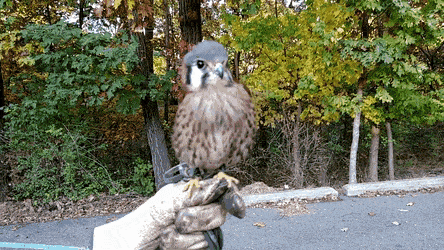
American Kestrel (Falco sparverius)
OK, this one I'm actually a bit enthusiastic about, partially because I love raptors, and I especially love this raptor. The American Kestrel is a small falcon, and is in fact the smallest falcon (and raptor) in North America. About the size of a mourning dove, they're pint-sized predators, specializing on insects, rodents, lizards, and the occasional sparrow or songbird. They're also versatile, living all over the USA in various habitats. And that, of course, includes Delaware. This is a breeding species in the state, so it already has that above the other two previously discussed! And to top it all off...it's literally a small wonder. Come on, man! This is perfect! A scrappy falcon that's literally red, white, and grayish-blue!
But, OK, if it's common all over, why specifically Delaware? Because it's actually threatened in Delaware, fun fact. This is prominent enough to have inspired the Brandywine Zoo to work with the American Kestrel Partnership (part of The Peregrine Fund, who we'll discuss again on another day or five), and start the Delaware Kestrel Partnership, which monitors kestrel populations in the state. The species' population has decreased by 88% in Delaware and surrounding states in the last 50 years, which is...dramatic. It's a species that desperately needs saving and attention, and work in Delaware can be applied in the kestrel's entire range. Look, I beg you to check this out, because it's a fascinating set of projects. And honestly, this alone would have me include the American Kestrel on this list. Plus...that would also make this the first raptor to become a state bird.
Yeah. Take a look. NO raptors amongst the State Birds. Insane.

Great Blue Heron (Ardea herodias)
Now, this one seems out of nowhere, but hear me out. For whatever reason, the Great Blue Heron (Ardea herodias) seems to be completely ignored as a state bird across the entire country, despite it being one of the MOST iconic birds in the United States. I mean, come on, almost all of us have seen a GBH at some point in our lives, especially if we live near water. But why suggest it for Delaware specifically, then? Well, the herons breed in Delaware, so that's checked off. They're found in the state year-round, making them easy to access and identify with. They're definitely iconic in appearance. They highlight the marshlands and wetlands of Delaware as an important ecosystem of concern. And...uh...
Look, I'll be straight with you. "Blue Heron" is the closest I could get to...another set of words associated with Delaware and birds. Because honestly, it's genuinely somewhat difficult to separate Delaware from those two words, and this would be a fairly minor change that would allow the use of that term with little fuss! And honestly, the Great Blue Heron isn't the worst choice in the world for Delaware, even if it admittedly barely breeds in the state compared to others. And...like...oh, goddammit, fine, let's get this over with.
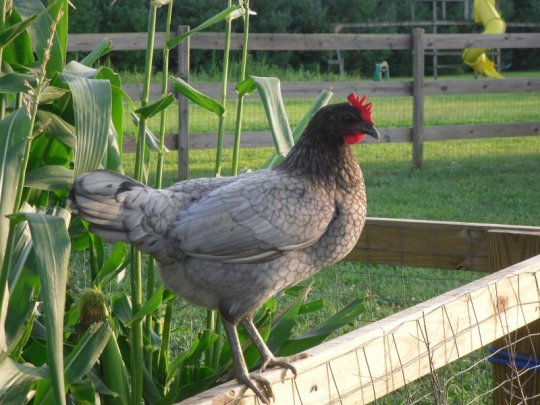
Delaware Blue Hen (Gallus domesticus)
Delaware. Look at me. Why...in the blue HELL...did you choose a goddamn chicken as your state bird? I mean, for God's sake, it's not a wild bird, and even if it is a breed developed in the state, IT IS A CHICKEN! What possible reason could there be to choose this bird over all the other possible birds? And look, I like chickens as much as the next guy. Used to raise and keep them as a kid, so I do love them, but this just feels wrong. But OK, let's make the argument for them by looking at Delaware's original argument.
So, from basic cursory research, the Delaware Blue Hen dates back to the Revolutionary War. Apparently, one of the regiments of the American army raised fighting game chickens that were so well-known, the regiment itself became known as the "Blue Hens". It's also possible that the leader of this regiment, Jonathan Caldwell, had a special blue hen that had blue offspring, and the men in the regiment also took to calling themselves "Sons of the Blue Hen." Which means...shit. That means the Blue Hen actually has cultural relevancy specific to the state of Delaware. Damn, that's actually a good argument for their assignment. But with that said...there actually is a problem here.
The Delaware Blue Hen doesn't technically exist.
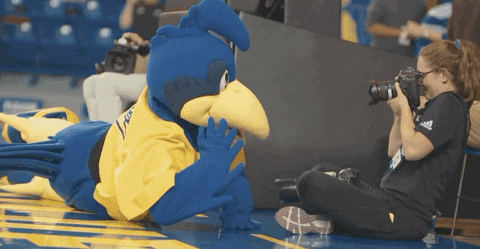
Yeah, this isn't actually a recognized breed of chicken, despite the INSANE amount of devotion Delawareans have for it. I mean, military regiments, sports teams, even the unofficial nickname for the state is named after the Blue Hen, and it's technically not a real chicken breed. Instead, they're actually American Game hens that are crossed with Andalusian Blue hens to get that iconic coloration, but they're not actually an isolated breed.
So...what does this mean? Because this is genuinely a problem, right? Delaware's state bird doesn't actually exist, AND it's a chicken. Well...I have a proposition for you, Delaware. Because I do recognize the fact that the Blue Hen seems to mean a lot to you, both now and historically. So, if that's the case, we need to recontextualize this guy in a couple of ways. So, here's my proposition...
Make the Delaware Blue Hen the State Game Bird.

Haven't brought this up yet, but some states have what's called a "state game bird" alongside the actual state bird. Game birds, by the classical and nonscientific definition, are members of the Galliformes and Anseriformes that are associated with hunting and food. And technically...the chicken counts. Yeah, Delaware easily could ratify the Delaware Blue Hen into service as the State Game Bird, which makes even more sense when you consider its role AS A SPORTS MASCOT! See what I mean? But that's not the end of it.
You'll also have to find some way to get the hen recognized as an independent breed. I have NO idea what the process is for that (I guess this is the pathway to do it?), but it's probably gonna take a bunch of breeders and number of years to turn this into a defined breed. Hell, as it stands, not every chicken hatched to a Blue Hen is even blue. So, hey, get on it, Delawarean chicken breeders! Make you state proud!
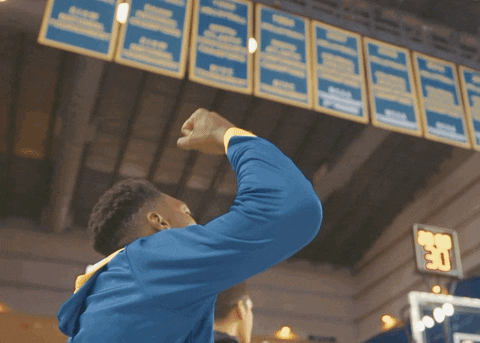
And that's the information on the candidates for the Delaware State Bird! Will the Delaware maintain its place? Will the Red Knot take it, despite the controversy surrounding the choice? Will my bullshit proposal for the Great Blue Heron actually resonate with some people? Up to Tumblr!
As for the next state, it's time to hop next door to Pennsylvania, and to a State Bird that also technically doesn't exist...for a somewhat different reason. And yes, for the record, I know the below GIF is technically the wrong species, BUT MY CHOICES IN GIFS ARE FEW

See you soon, and happy birding!
Introduction to the State Birds Initiative
1. Delaware - Poll | Results 2. Pennsylvania - Poll | Results 3. New Jersey - Poll | Results 4. Georgia - Poll | Results 5. Connecticut - Poll | Results 6. Massachusetts - Poll | Results
#bird#birds#birdblr#birding tumblr#bird tumblr#birders#birder#birding#black birder#birdwatching#birdwatchers#birdwatcher#state bird#state bird initiative#state birds initiative#state birds#poll#bird poll#tumblr poll#delaware#delaware blue hen#gallus domesticus#chicken#red knot#calidris#american kestrel#kestrel#falco sparverius#ring billed gull#gull
69 notes
·
View notes
Text
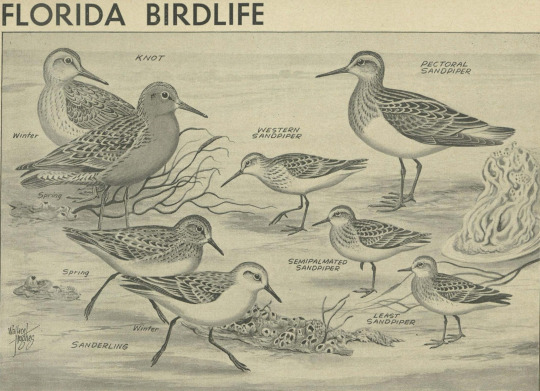
Florida Wildlife; vol. 12, no. 2. July, 1958. Illustration by Wallace Hughes.
Internet Archive
#birds#shorebirds#sandpipers#western sandpiper#pectoral sandpiper#semipalmated sandpiper#least sandpiper#sanderling#red knot#Wallace Hughes
130 notes
·
View notes
Text
a mixed flock of red knot (calidris canutus) and bar-tailed godwits (limosa lapponica) in flight over mudflats, ireland
#charadriiformes#scolopacidae#calidris#red knot#limosa#bar tailed godwit#shorebirds#waders#birds#birdwatching#bird photography#display flight#this isn't the whole flock but there were about 500 of both species so it was awesome to see#got some shots of the flock of rest too so will post those later
11 notes
·
View notes
Text

Rufa Red Knot (Calidris canutus rufa)
Migrates from the Canadian Arctic to the lower tip of South America
Status: Endangered (Canada), Threatened (USA)
Threats: overfishing of horseshoe crabs, extreme weather, rising sea levels and global warming
I just flew 9,000 miles through hurricane weather and the horseshoe crabs are SOLD OUT? Are you freaking kidding me?
45 notes
·
View notes
Text

Red Knot
15 notes
·
View notes
Text


Red Knot (Calidris canutus)
Sandymount, Co. Dunlin - 10-12-2023
6 notes
·
View notes
Text

I liked this study page i did last nite so it’s getting posted here. I wrote 4/13 but it was like 3am today actually sp i guess im a liar
2 notes
·
View notes
Text




Red knots, dunlins, and sanderlings ( shorebirds have stolen my heart)
Sunday, April 21st 2024 2:14pm
0 notes
Text

A new volume in the @shikashikacollective Birdsong series is in the works, this time uniting the stories and journeys of ten migratory birds with ten migratory artists from across the Americas.
The @kickstarter campaign launches on March 11.
249 notes
·
View notes
Text

Calidris canutus [コオバシギ,Red Knot]
オバシギに追いやられて1羽で寂しそう😟
54 notes
·
View notes
Text







The State Bird Initiative - Delaware: Archetypes
Hello! If you've been waiting for another State Bird Initiative poll, don't worry! Massachusetts is coming soon! Been busy with grad school and life things (been an...interesting fall), so my attention was pretty heavily diverted, and Massachusetts is going to be...interesting. But in the meantime, I've been thinking about something. If you'd like to know more about these characters, go ahead and check out the post after the jump!
When I was a kid (long long ago, in the forgotten age known as the '90s), I was a big fan of the magazine series Ranger Rick. If you've never heard of it, just know that it's a book published by the National Wildlife Federation for kid, teaching them about animals and the environment through fun articles, games, and comics that star the titular character, Ranger Rick, and his various animal friends. Just know that I loved the hell out of this series as a kid. And hey, for those of you youngsters that grew up without this book (even though it's still being published, apparently, alongside the nostalgia fuel that is Zoobooks), you may identify more with shows like Zoboomafoo or Wild Kratts, amongst other animal shows for kids.

As a former (and future) teacher, I'm a big fan of teaching aids for kids, especially things that get them excited and interested in a given subject. Since a huge part of the State Bird Initiative is meant to choose birds that kids and other can identify with their home state, I had the idea to make archetypal representatives for each of the nominated species. Kind of like mascots. I'm calling them Archetypes in this post, but I'll probably come up with a better name for these guys. And yes, I'll be making some more of these in the future, ideally for every state, with some characters returning for multiple posts.
Each of the above birds are highlighted in the polls for the Initiative, and each is given a name based somehow on their species. Those descriptions are beneath the pictures themselves. Remember, these are meant to archetypal characters for kids to identify with, Ranger Rick-style, meaning that their characters are somewhat simple for kids to latch on and gets attached to. Call this an educational concept, were the State Bird Initiative actually to be official. This is just the first of these posts, so it's a bit rough and descriptive. So, with that, any feedback is welcomed for these five colorful characters!
#birds#bird#state bird#state bird initiative#state birds#my art#digital art#procreate#character design#birdblr#birding#bird art#delaware#artists on tumblr#delaware blue hen#domestic chicken#gallus gallus#american kestrel#falco sparverius#great blue heron#ardea herodias#red knot#calidris canutus#ring-billed gull#larus delawarensis#ranger rick
4 notes
·
View notes
Text
Blue Blood From Horseshoe Crabs Is Needed For Medicine, But A Declining Bird Relies On Crabs To Eat
The blood of the horseshoe crab provides a valuable medical product critical to maintaining the safety of many drugs and devices used in medical care. A protein in the blood called Limulus Amebocyte Lysate (LAL) is used by pharmaceutical and medical device manufacturers to test their products for the presence of endotoxins, bacterial substances that can cause fevers and even be fatal to humans. The LAL test is one of the most important medical products derived from a marine organism to benefit humans.
Why is the Horseshoe Crab the original "blue blood"? A horseshoe crab's blood has a blue to blue-green color when exposed to the air. The blood is blue because it contains a copper-based respiratory pigment called hemocyanin.
— Patrick Whittle | Monday 31 July, 2023 | Associated Press

Gulls gather around horseshoe crabs spawning at Reeds Beach in Cape May Court House, N.J., Tuesday, June 13, 2023. The biomedical industry is adopting new standards to protect a primordial sea animal that is a linchpin of the production of vital medicines. But conservationists worry the new approach still doesn't go far enough in protecting horseshoe crabs that are a food for a declining bird species. (AP Photo/Matt Rourke)
Portland, Maine (AP) — The horseshoe crab has been scuttling in the ocean and tidal pools for more than 400 million years, playing a vital role in the East Coast ecosystem along with being a prized item for fishing bait and medical research.
Its blue blood is harvested for medical researchers and used by drug and medical device makers to test for dangerous impurities in vaccines, prosthetics and intravenous drugs. The crabs are used by fishing crews as bait to catch eels and sea snails. And their eggs are a critical food for a declining subspecies of bird called the Red Knot – a rust-colored, migratory shorebird listed as threatened under the Endangered Species Act.
The competing interests have set up a clash among researchers, fishing crews and environmentalists over new protections designed to keep more of the crabs in the environment. The animals are drained of some of their blood and returned to the shore, but many die from the bleeding. And a drive to create synthetic alternatives has yet to succeed in phasing out the crabs from use.
“Everything You Do In Life Comes From Horseshoe Crab Blood. Vaccines, Antibiotics And So Much More.”
Recent revisions to guidelines for handling the animals should keep more alive through the process, regulators said. The animals — not really true crabs but rather more closely related to land-dwelling invertebrates such as spiders and scorpions — are declining in some of their East Coast range.
"They were here before the dinosaurs," said Glenn Gauvry, president of Ecological Research & Development Group, a Delaware-based nonprofit that advocates for horseshoe crab conservation. "And they’re having problems because the new kids on the block, us, haven’t learned to appreciate the elders."
The harvest of horseshoe crabs has emerged as a critical issue for conservationists in recent years because of the red knot. The birds, which migrate some 19,000 miles (30,577 kilometers) roundtrip from South America to Canada and must stop to eat along the way, need stronger protection of horseshoe crabs to survive, said Bethany Kraft, senior director for coastal conservation with the Audubon Society.
Kraft and other wildlife advocates said the fact the guidelines for handling crabs are voluntary and not mandatory leaves the red knot at risk.

Horseshoe crabs spawn at Reeds Beach in Cape May Court House, N.J., Tuesday, June 13, 2023. The biomedical industry is adopting new standards to protect the sea animal that is a linchpin of the production of vital medicines. (AP Photo/Matt Rourke)
“Making sure there is enough to fuel these birds on this massive, insanely long flight is just critical,” Kraft said. “There's very clear linkage between horseshoe crabs and the survival of the red knot in the coming decades.”
The horseshoe crabs are valuable because their blood can be manufactured into limulus amebocyte lysate, or LAL, that is used to detect pathogens in indispensable medicines such as injectable antibiotics. The crabs are collected by fishermen by hand or via trawlers for use by biomedical companies, then their blood is separated and proteins within their white blood cells are processed. It takes dozens of the crabs to produce enough blood to fill a single glass tube with its blood, which contains immune cells sensitive to bacteria.
There are only five federally licensed manufacturers on the East Coast that process horseshoe crab blood. The blood is often described by activist groups as worth $15,000 a quart (liter), though some members of the industry say that figure is impossible to verify.

Lawrence Niles, an independent wildlife biologist with the Wildlife Restoration Partnerships, right, and Susan Linder horseshoe crab egg density team leader with the Horseshoe Crab Recovery Coalition examine a crab at Reeds Beach in Cape May Court House, N.J., Tuesday, June 13, 2023. The biomedical industry is adopting new standards to protect the sea animal that is a linchpin of the production of vital medicines. (AP Photo/Matt Rourke)
Regulators estimate about 15% of the crabs die in the bleeding process. In 2021, that meant about 112,000 crabs died, said Caitlin Starks, a senior fishery management plan coordinator with the Atlantic States Marine Fisheries Commission. The bait fishery for horseshoe crabs, which are used as bait for eels and sea snails, killed more than six times that, she said.
Still, the fisheries commission in May approved new best management practices for the biomedical industry's harvesting and handling of the crabs. Those include minimizing exposure to sunlight and keeping crabs cool and moist, Starks said.
“The goal is to give the crabs that are bled a better chance of surviving and contributing to the ecosystem after they are released,” she said.
That's exactly what the new guidelines will do, said Nora Blair, quality operations manager with Charles River Laboratories, one of the companies that manufactures LAL from horseshoe crab blood. Blair was a member of a working group that crafted the updated guidelines alongside other industry members, conservationists, fishery managers, fishermen and others.

Horseshoe Crabs spawn during at Pickering Beach in Dover, Del., Sunday, June 11, 2023. The biomedical industry is adopting new standards to protect a primordial sea animal that is a linchpin of the production of vital medicines. (AP Photo/Matt Rourke)
Blair said the industry is working toward synthetic alternatives — an outcome conservationists have been pushing for years. Lonza, a Switzerland-based company that is one of the LAL manufacturers, offers animal-free testing solution, and the company has touted it as a way to test for toxins while protecting natural resources, said Victoria Morgan, a spokesperson for the company.
However, for now the wild harvest of horseshoe crabs remains critically important to drug safety, Blair said.
“The critical role of horseshoe crab in the biopharmaceutical supply chain and coastal ecosystem makes their conservation imperative,” he said.
The Atlantic horseshoe crab, the species harvested on the East Coast, ranges from the Gulf of Maine to Florida. The International Union for Conservation of Nature lists the species as being “vulnerable” based on a 2016 assessment.
One of the most important ecosystems for horseshoe crabs is the Delaware Bay, an estuary of the Delaware River between Delaware and New Jersey. The bay is where the crabs breed and the red knots feed.

An unearthed cluster of horseshoe crab eggs lay near spawning horseshoe crabs at Reeds Beach in Cape May Court House, N.J., Tuesday, June 13, 2023. The biomedical industry is adopting new standards to protect a primordial sea animal that is a linchpin of the production of vital medicines. (AP Photo/Matt Rourke)
The density of horseshoe crab eggs in the bay is nowhere near what it was in the 1990s, said Lawrence Niles, an independent wildlife biologist who once headed New Jersey's state endangered species program. Meanwhile, the population of the rufa red knot, the threatened subspecies, has declined by 75% since the 1980s, according to the National Park Service.
The birds need meaningful protection of horseshoe crab eggs to be able to recover, Niles said. He tracks the health of red knots and horseshoe crabs and has organized a group called Horseshoe Crab Recovery Coalition to advocate for conservation measures.
Niles and volunteers he organizes have been counting the horseshoe crab eggs since the 1980s and tagging birds since the 1990s. In mid-June, as he was wrapping up this year's tracking in southern New Jersey, he described the eggs as “good and consistent” through the month.
“What we want is the harvest to stop, the killing to stop, and let the stock rebuild to its carrying capacity,” Niles said.
The horseshoe crabs have been harvested for use as bait and medicine from Florida to Maine over the years, though the largest harvests are in Maryland, Delaware, Massachusetts and Virginia. According to federal fishery statistics, the crabs were worth about $1.1 million in total at the docks in 2021.

Susan Linder, a horseshoe crab egg density team leader with the Horseshoe Crab Recovery Coalition Horseshoe Crabs helps a stranded crab at Reeds Beach in Cape May Court House, N.J., Tuesday, June 13, 2023. The biomedical industry is adopting new standards to protect a primordial sea animal that is a linchpin of the production of vital medicines. (AP Photo/Matt Rourke)
That figure is dwarfed by seafood species such as lobsters and scallops, which are routinely worth hundreds of millions of dollars. However, horseshoe crab fishers are dedicated stewards of a fishery that supplies a vital product, said George Topping, a Maryland fisherman.
“Everything you do in life comes from horseshoe crab blood. Vaccines, antibiotics,” he said. “The horseshoe crab stocks are healthy."
— Associated Press Photographer Matt Rourke in Pickering Beach, Delaware, and Video Journalist Rodrique Ngowi in Middle Township, N.J., contributed to this report.
#Horseshoe Crabs#Blue Blood#400 Million Years#East Coast#Ecosystem#Red Knot#Endangered Species Act#Fishing Crews#Environmentalists#Synthetic Alternative#Glenn Gauvry#Ecological Research & Development Group#Delaware#Conservationists#Canada 🇨🇦#South America 🇺🇸#Bethany Kraft#Audubon Society#Limulus Amebocyte Lysate (LAL)#Antibiotics#Biomedical#Caitlin Starks#Atlantic States Marine Fisheries Commission#Nora Blair#Charles River Laboratories#Lonza#Switzerland 🇨🇭#Victoria Morgan#Gulf of Maine#Florida
1 note
·
View note
Text
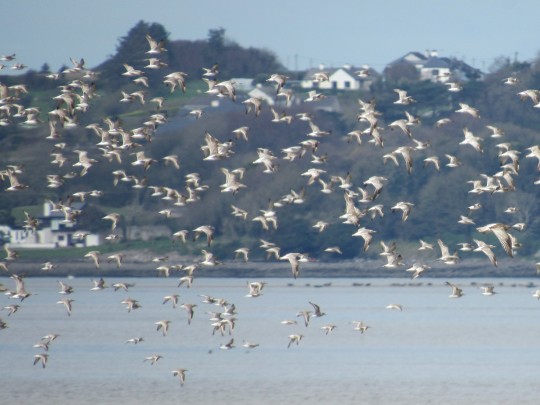

a mixed flock of red knot (calidris canutus) and bar-tailed godwits (limosa lapponica), ireland
#charadriiformes#scolopacidae#calidris#red knot#limosa#bar tailed godwit#birds#birdwatching#bird photography#display flight#i don't see knot often so yeehaw!!!
3 notes
·
View notes
Text


I was darning a thin spot in this sock and realized halfway through that the charcoal yarn I was using for the darn made it look like the socks were magma and this spot cooled! I think that's Neat.
#this red yarn and i are still Not Friends because it's constantly misbehaving#but i insist on getting my time's worth of wears out of these socks before they go#scribbles' knots#knitting#visible mending#sock knitting
341 notes
·
View notes